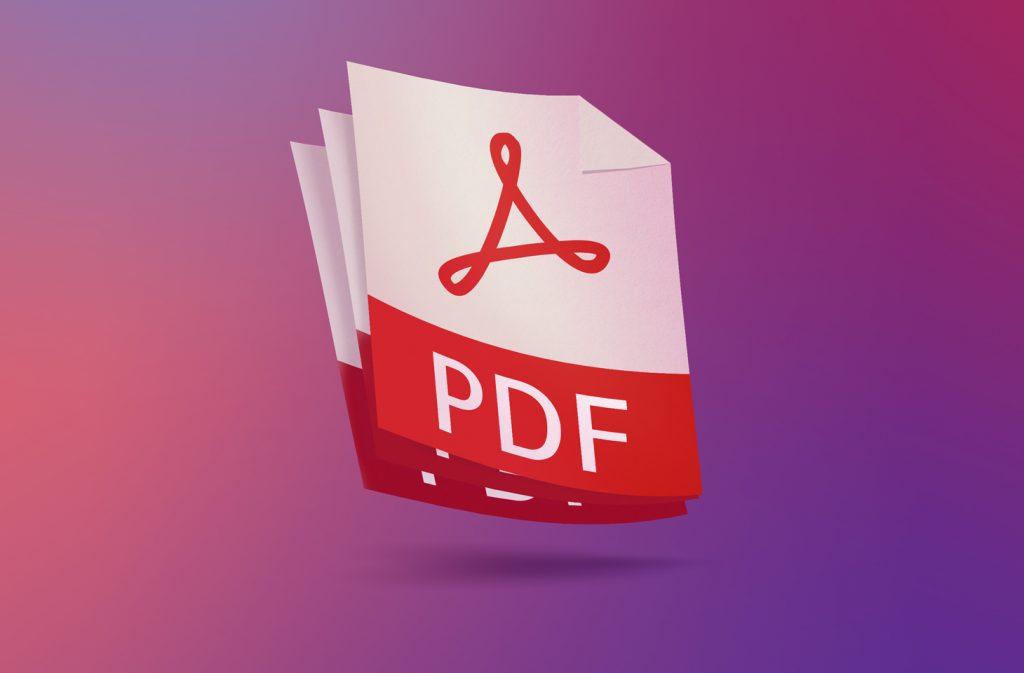Portable document format or typically known as ‘PDF” files are widely used throughout the world. It was developed in 1992 by Adobe. They were developed for the purpose of document sharing using a fixed layout text, as there are much software and operating systems now, and it’s difficult to share documents otherwise. PDF Files display the text or graphics, in the same pattern and format as originally created.
To understand better, let’s suppose you had a Word document, and you wanted to share it exactly in the same formatting and structure. However, the receiver of that document operates a computer that uses a different operating system. In that case, he will receive a Word document displaying the content differently. To cope-up with this issue, PDF files are used, which allows you to share documents with the same formatting across any device or OS.
Advantages
Over the years, PDF files have proved to be of great utility to business. We will look into the main benefits of using PDF files
- Graphic Consistency: PDF files have the ability to display all the text, image, or video content, in the exact formatting and structure across all operating software and devices. It’s really crucial for organizations using automated data extraction tools, to be getting the data in a consistent and standard format to maintain data integrity and data consistency.
- Convenience: PDF files can be used by everyone and viewed everywhere, in any device. PDF documents are non-editable, and the format is preserved across all devices and software. If you view a document on a computer, you will see the same formatting as you would see if you viewed the document on a mobile screen.
- Security: PDF files allows you to place multiple security checks within your document to mark it as your own. You can put on watermarks, setup password, or even have a digital signature to prevent theft. This allows the agencies and organizations to be confident about their data that nobody can edit or make changes to their files without permission. This can not be achieved in Word documents or other formats.
- Shareability: PDF files can be created with unlimited amounts of data and information as you can later compress the file into a file size that is easy to share. You can do this all without compromising on your image quality or text formatting.
Limitations

Img source: kaspersky.com
With all the benefits and industry wide usage of PDF files, still have a few limitations. Although these limitations might not seem significant at a micro level, but when you have to handle thousands of PDF files, it becomes a hassle.
- Non-editable: PDF document format were made to secure the data formatting regardless of the operating system or device. Therefore, these documents are not editable, and you have to use online tools like Foxit PDF to Word to convert them to MS Word, and then make the changes. Meanwhile if you are an organization with lots of PDF documents coming in, it becomes a challenging task.
- Engagement: Despite all the benefits one might get from PDF files, they are super simple and non-attractive in reading. It can sometimes become a hurdle in engaging the readers. PDF files
PDF and Data Extraction

Img source: unsplash.com
PDFs have become a crucial part of every business. All organizations prefer storing their data and receipts in PDF formats. However, in a fast-paced environment, it’s crucial for organizations to put their data to good use. Keeping their data stored as PDF will help them in sharing their data, but it would still prove to be a limitation while extracting the data from those files for the purpose of analysis. Analyzing the extensive data collected at different customer touchpoints is extremely important to improve your buyer’s journey and business efficiency.
PDFs are hard to edit, and you’ve to manually extract data from each data field within PDFs, it becomes a tedious and tiring task. Fortunately, there are many PDFs data extraction software in the market that help you extract data from your PDF. This software come in different level of capacities and capabilities. If you have a few files to extract data from, you can go for free online tools. Additionally, you may also consider utilizing a reliable PDF editor, which is readily accessible on the web nowadays.
PDF files are essentially used in all industries because of their extensive usability. The healthcare industry uses PDFs to store patient details, purchase receipts, financial statements, employee records, etc. Similarly, the automobile industry uses PDF formats to record car sales, employee records, revenues, financial statements, purchase orders, etc. A major part of all the data is stored as PDF. This pattern can be generalized to several other industries. However, with most of the data trapped within PDF files, they face limitations while trying to analyze their data. Since the data is trapped in a PDF, they would have to manually extract useful pieces of information from each PDF, arrange them in a structured format in a structured file before they can feed it into an analytics tool. This is a very inefficient, slow, and tiresome method for extracting data from PDFs as a lot of time and resources need to be dedicated for this purpose. In this competitive environment, all organizations are short of time, which is why they need a faster way to extract data from PDFs and make it ready for analysis. If you have a ton of files at an organizational level, you might preferably go for paid PDF data extraction software. These tools are extremely effective as they save time, improve productivity, and help you arrive at better insights faster.
Conclusion

Img source: unsplash.com
PDFs are undoubtedly an important file structure for maintaining and sharing data. They have numerous benefits. Obviously, everything has its positives and negatives. While you can use PDF files for sharing purposes, they are a hurdle in the process of data analytics, and data must be extracted from them before analysis. To overcome this limitation, organizations can use paid PDF data extraction software, which is economical as well as effective. You can visit Astera.com to find out more about their data extraction software.
For additional information, please visit the Local Digital Business.



